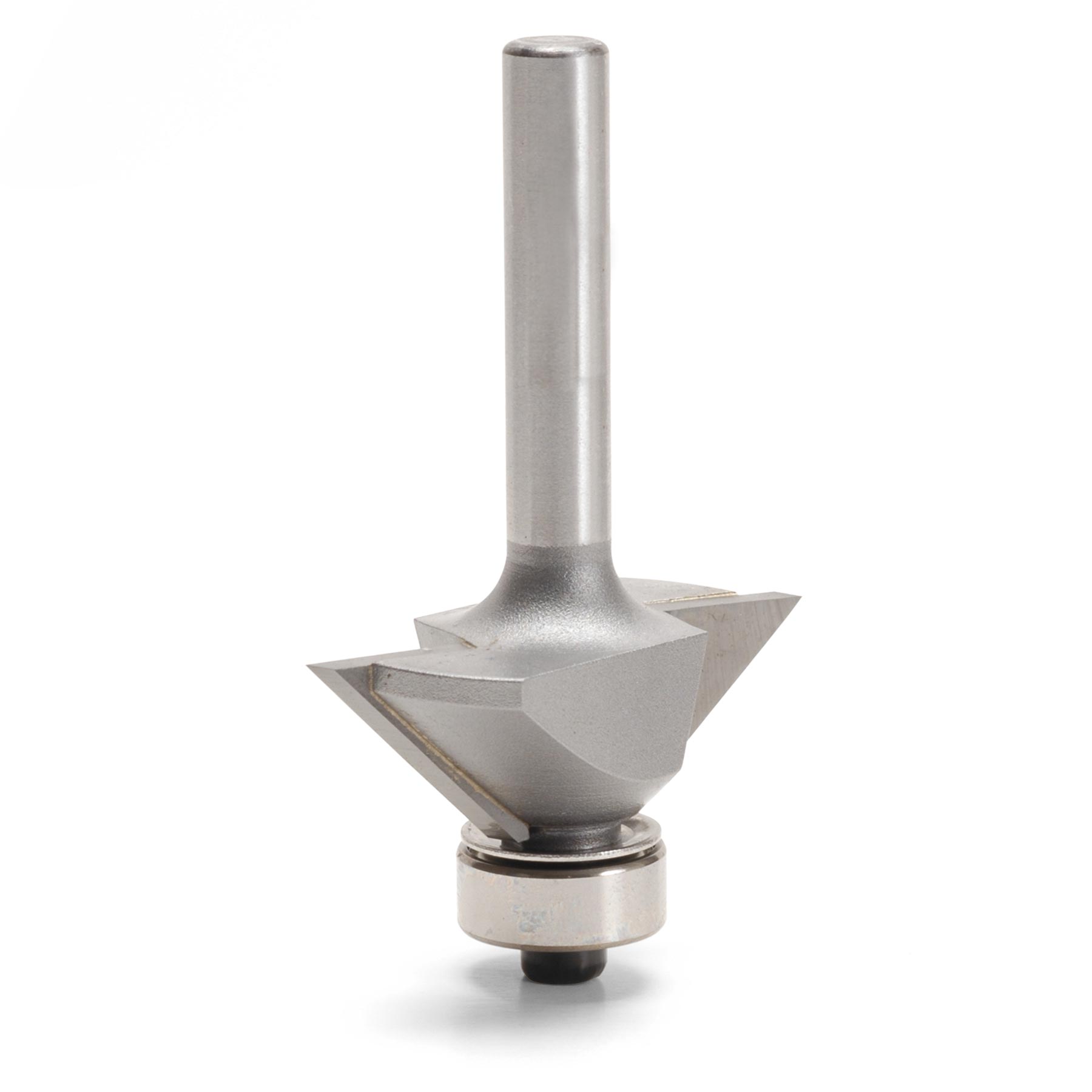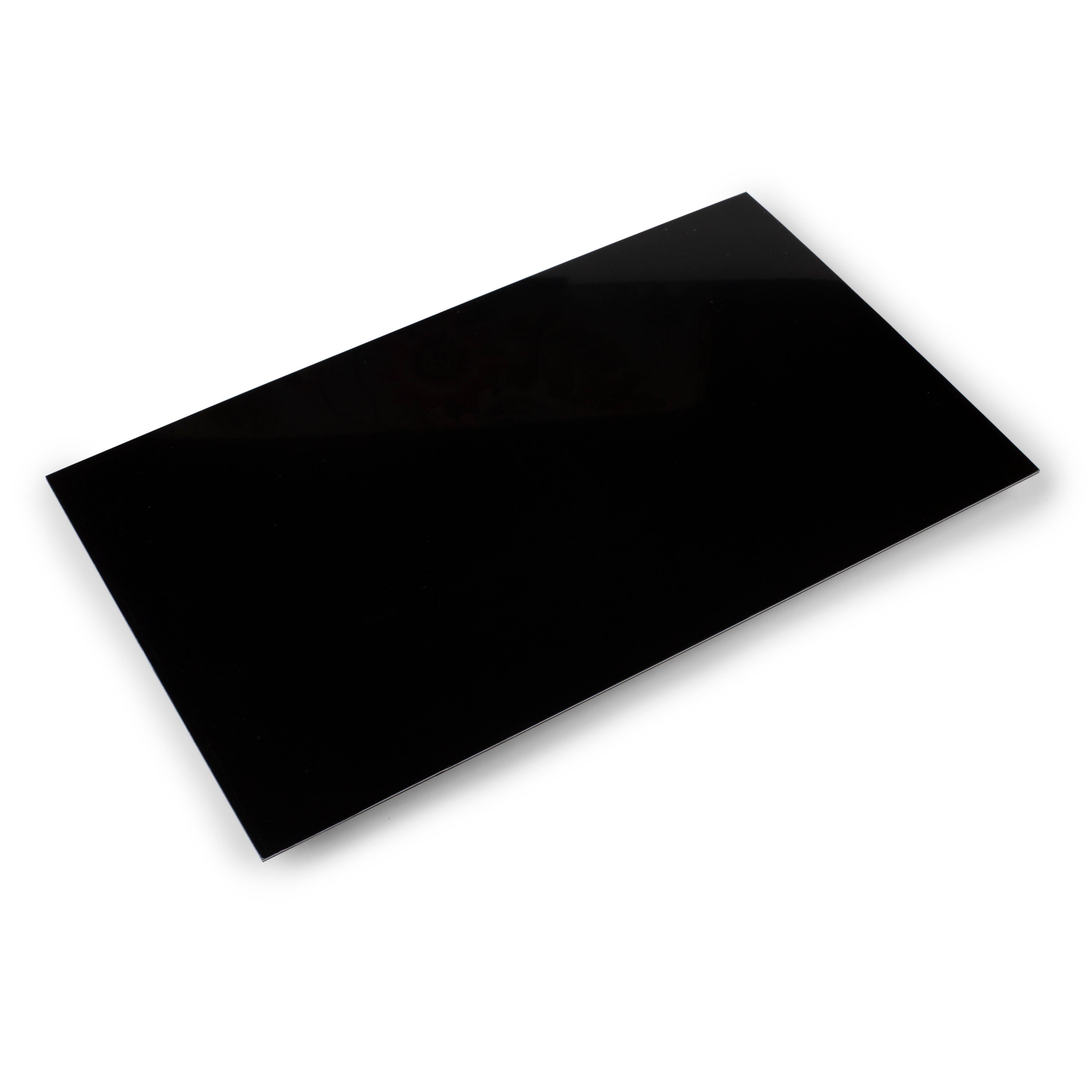Cutting Custom Pickguards with the Pickguard Bevel Cutter
How to cut and bevel custom pickguards with the Pickguard Bevel Cutter.
The bearing on the bottom of the bevel cutter follows the shape of your shop-made template. Making the template is the most important step — the final pickguard edge will only be as good as the guiding edge of the template. If your template is made from hardboard, plywood, or any porous material, saturate the edge with superglue or epoxy to harden the edge, then file and scrape it clean and smooth. The template should be at least 1/2" thick for good ball-bearing contact. There are two approaches to routing with a template and the bevel cutter: hand-holding a router, or using a router table (small, portable router tables can be bought from Sears, or other woodworking suppliers). Leave the protective plastic film on the face of the pickguard material until you are finished. With a bandsaw or coping saw, rough-cut the pickguard to shape, leaving it oversize by at least 1/16". Fasten it to the top of the template with pieces of double-stick tape placed around the perimeter (but back from the edge so the cutter bit won't come into contact and become gummy and load up). Tape several scrapwood blocks to your benchtop to raise the template off the surface and keep the bearing from touching the benchtop. If your pickguard has a small cutaway "horn" with a tight radius as most do, the router base has little support and can tip easily, resulting in an uneven bevel and a ruined pickguard. Tape several support blocks in the horn area — built from scrap wood and pickguard cut-offs laminated to the same height as the workpiece — to support the router as it cuts around the delicate curve. Practice on scrap! Always keep your fingers well away from the cutter, and start cutting along the edge to get the feel of the cutter before moving the workpiece toward a cutaway. Begin your cut by gliding the workpiece into the bearing against the direction of the cutter's rotation. Always cut against the cutter rotation, drawing the workpiece off, and away from the cutter when you reach the end of a pass. Never push a sharp edge such as a cutaway horn directly into the cutter. Instead, work up to a horn, then move slowly but firmly around the horn and continue on with the rout. Practice on scrap!
Tips for hand-held routing:

Tips for using a router table:

